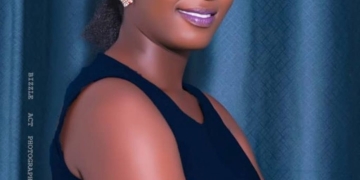
KAMPALA — Yesterday, we spent the entire day in the High Court of Uganda following the proceedings of the case against Mrs. Molly Katanga and her co-accused, including her daughter, who are in the dock for allegedly murdering Molly’s husband, Henry Katanga. The defense attorneys, led by Counsel Ellison Karuhanga, assisted by Counsel Bruce Musinguzi, and supported by Senior Lawyers Peter Kabatsi, MacDusman Kabega, and Jet Tumwebaze, spent the day cross-examining Assistant Commissioner of Police Andrew Mubiru.
Mr. Mubiru’s testimony, given over more than two days, placed the DNA of Mrs. Molly Katanga at the crime scene and on the alleged killer weapon. However, what transpired in court left many stunned and raised more questions than answers. Counsel Karuhanga led the cross-examination, attacking the DNA testimony. He seemed well-versed in the science of DNA analysis.
Counsel Karuhanga started by telling the court and Mr. Mubiru that the DNA report does not speak to the activities that deposited DNA on the gun. He explained the concept of “source level proposition,” which is divided into sub-source and sub-sub-source level, and also delved into “activity level proposition.” He showed the court that one can have their DNA on an object they’ve never touched simply by having touched a surface that another person later touched and held the weapon. Mr. Mubiru agreed with this.
He went further to show that, at sub-source level, DNA is apportioned to minor and major contributors, but this does not tell us much because different individuals shed DNA at different rates; some faster than others. These are called super shedders, so the dominance of one’s DNA in the absence of activity level proposition isn’t so meaningful. It turns out that Mr. Mubiru and his team did not do activity level analysis; therefore, they cannot tell how the gun got DNA from three distinct sources. They also did not do DNA testing of the blood they found on the gun, nor did they test for fingerprints or fingernails.
However, they did DNA testing of the blood samples they swabbed off the floor, walls, ceiling, door knobs, both to the master bathroom and the master bedroom where the crime is alleged to have happened. They also took blood samples from the bed, beddings, and mosquito net. The late Henry Katanga was found dead in a pool of blood on their bed.
The surprise in court came when Mr. Mubiru testified that all the blood samples across the room, save for the bed, belonged to Mrs. Molly Katanga. It is at this point that defense attorney Karuhanga told the court that what most likely happened was that Mr. Katanga beat up his wife so badly, banging her head on the walls and door knobs (where her blood and hair strands were found), and her blood even splattered to the ceiling. There are some gruesome images of her head with skin beaten off the skull; they are so grotesque that I wouldn’t share them here.
Mr. Karuhanga then asked Mr. Mubiru if he believed it was possible that a beating so severe could be how Mrs. Katanga’s blood ended up splashed in all these places. Mr. Mubiru said he couldn’t speak to activity level details. He even joked that it could be that Mrs. Katanga urinated on the ceiling, which received disapproving groans from the courtroom.
Then they moved to DNA electropherograms, where the court session ended on a cliffhanger, with Mr. Karuhanga accusing Mr. Mubiru of submitting doctored results because he eliminated some peaks on the graphs without explanation.

















